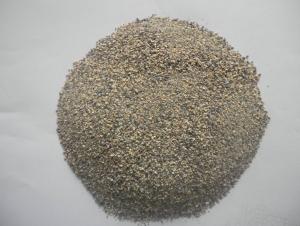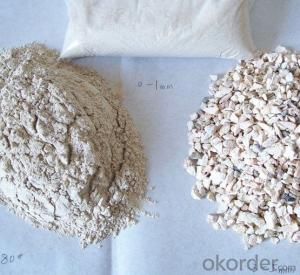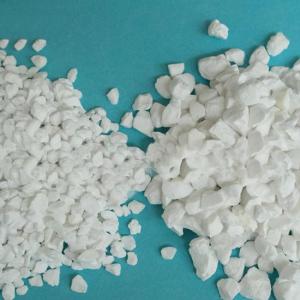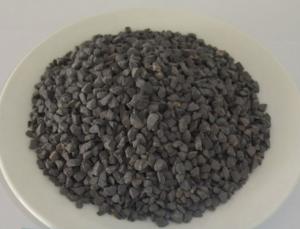Raw Materials for High Density Refractory Silica Bricks
- Loading Port:
- Tianjin
- Payment Terms:
- TT OR LC
- Min Order Qty:
- 100 m.t.
- Supply Capability:
- 5000 m.t./month
OKorder Service Pledge
OKorder Financial Service
You Might Also Like
General Information:
CMAX brand Silica bricks are made from high quality quartz tail sand, lime and mineralizing agent through the process of crashing, screening, mixing, pressing, drying and sintering.
Features of Refractory silica bricks for Glass Kiln:
1. high volume density of 2.34 g/cm3
2. high SiO2 content of 96%
3. low iron content of 0.8%
4. low melting point of 5%
Applications of Refractory silica bricks for Glass Kiln:
Because of the high temperature resistant performance significantly, long service life characteristics (as long as more than eight years) of refractory silica brick for Glass Kiln, it can significantly improve the quality of glass, so the refractory silica bricks are widely used in all kinds of glass furnace melting department, regenerator and other important parts.
Physical and chemical index of refractory silica bricks for glass kiln:
Item Brand | CMAX-96A | CMAX-96B | ||
SiO2 % ≥ | 96 | 96 | ||
Al2O3+2(K2O+Na2O) % ≤ | 0.5 | |||
Fe2O3 % ≤ | 0.8 | 1 | ||
Refractoriness °C ≥ | 1710 | 1710.0 | ||
0.2MPa Refractoriness under load °C ≥ | 1680 | 1670 | ||
Apparent porosity % ≤ | Brick with weight no less than 20kg | 20 | 20 | |
rick with weight less than 20kg | 22 | 22 | ||
CS MPa ≥ | 35 | 35 | ||
Bulk desity g/cm3 ≤ | 2.34 | 2.34 | ||
Starndard Size:
230*114*64mm
230*114*76mm

- Q: What characteristics do A grade external wall fireproofing material have?
- 1. Save space and reduce costs; 2. Fireproofing, green and environmental protection; 3. Waterproofing; 4. Sound insulation; 5. Thermal insulation; 6. Install easily and shorten the construction period; 7. High safety performance.
- Q: Concrete composition and function of magnesia bond used in refractory
- According to the chemical composition and use can be divided into metallurgical magnesia, magnesia brick, magnesia brick, magnesia brick, magnesia calcium brick, magnesia brick and other varieties. Its performance is greatly affected by CaO/SiO2 ratio and impurities. High purity magnesia brick refractoriness under load and thermal shock resistance are better than the general magnesia brick. High refractoriness, has good resistance to alkaline slag and iron slag, is a kind of important senior refractories. Use of magnesia product production by sintering process, sintering temperature is 1500 ~ 1800 DEG C, in addition, you can also add chemical bond, made of brick and unshaped refractory material. Mainly used in open hearth furnace, electric furnace, converter, oxidation non-ferrous metal smelting furnace, cement kiln and alkaline refractory kiln etc..
- Q: How to divided the grade of external wall thermal insulation materials?
- Synthesized the three versions of GB8624 (1997,2006,2011), external wall thermal insulation fire?rating can be basically divided into: A1, A2, B1, B2, B3 and other levels. There are many technical indicators to make specific division, but I partly cannot report for a while, because it is very professional and technical. I hope I can help you!
- Q: What are fireproofing materials?
- 1. Fire-resistant coatings like finishing fire retardant paint, fire retardant coating member and fire-resistant coating for steel structure; 2. Fireproofing materials of flame-retardant plastics and plastic products, textiles, flame retardant fabrics, building materials and products, flooring materials, and wall insulation system; 3. Fireproof element of fireproof panels, fire doors, fire resistant window frames, fire resistant shutter, fire-resistant glass, elevator landing doors, ventilation ducts, fire-proof?sealing?materials, and fire protection smoke exhaust fans.
- Q: Refractories for iron-making blast furnace?
- Vibrating materials, corundum brick and aluminum carbon brick will be developed. Taphole commonly use stemming, silicon carbide - graphite bricks, whose material is Al2O3-SiC-C. Medium and large sized blast furnaces in China use dense mullite bricks, castable, graphite brick. Common lining material for iron ditch is ramming mass. hearth and furnace bottom common use carbon bricks, semi-graphite bricks, charring silica bricks, corundum bricks. Blast furnace bosh and lower part of furnace stack commonly use mullite bricks.
- Q: What is refractory aggregate?
- It includes two categories: coarse aggregate and fine aggregate.
- Q: What is the offer of fire proofing thermal insulation material?
- The following prices are from the Internet and for your reference only. Hainan fire proofing thermal insulation material ceramic fiber paper aluminum silicate fiber blanket/aluminum oxide fiber insulation cotton insulation pipe 12 yuan Hainan multicrystal mullite/calcium silicate corundum ceramic fiber loose wool short fiber fire proofing thermal insulation material non-asbestos high temperature resistant aluminum silicate fiber insulation cotton fire-resistant material ceramic fiber blanket thermal insulation blanket 28 yuan non-asbestos high temperature resistant aluminum silicate fiber ceramic fiber blanket needled felts insulation blanket fire resistant material thermal insulation cotton blanket reference price: 59 yuan
- Q: What is shapeless refractory with high performance?
- The popular ones are: Non-cement fine powder bonded castable is a functional refractory castable with nano material introduced.
- Q: What kind of materials are needed to make refractory bricks?
- Who knows what kind of materials are needed to make refractory bricks?
- Q: Are the rubber insulation materials are refractory materials?
- Bushi
Send your message to us
Raw Materials for High Density Refractory Silica Bricks
- Loading Port:
- Tianjin
- Payment Terms:
- TT OR LC
- Min Order Qty:
- 100 m.t.
- Supply Capability:
- 5000 m.t./month
OKorder Service Pledge
OKorder Financial Service
Similar products
Hot products
Hot Searches
Related keywords




























